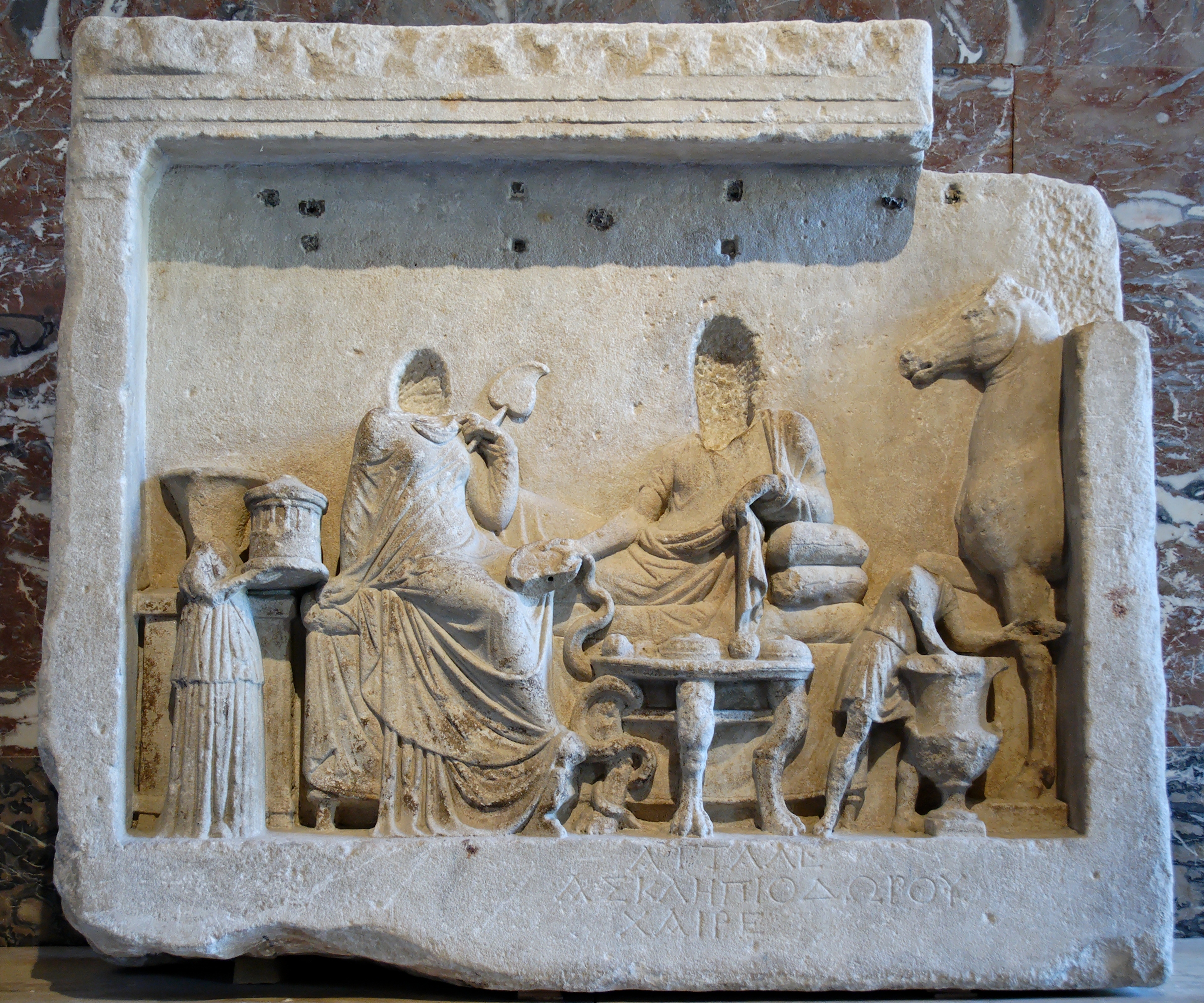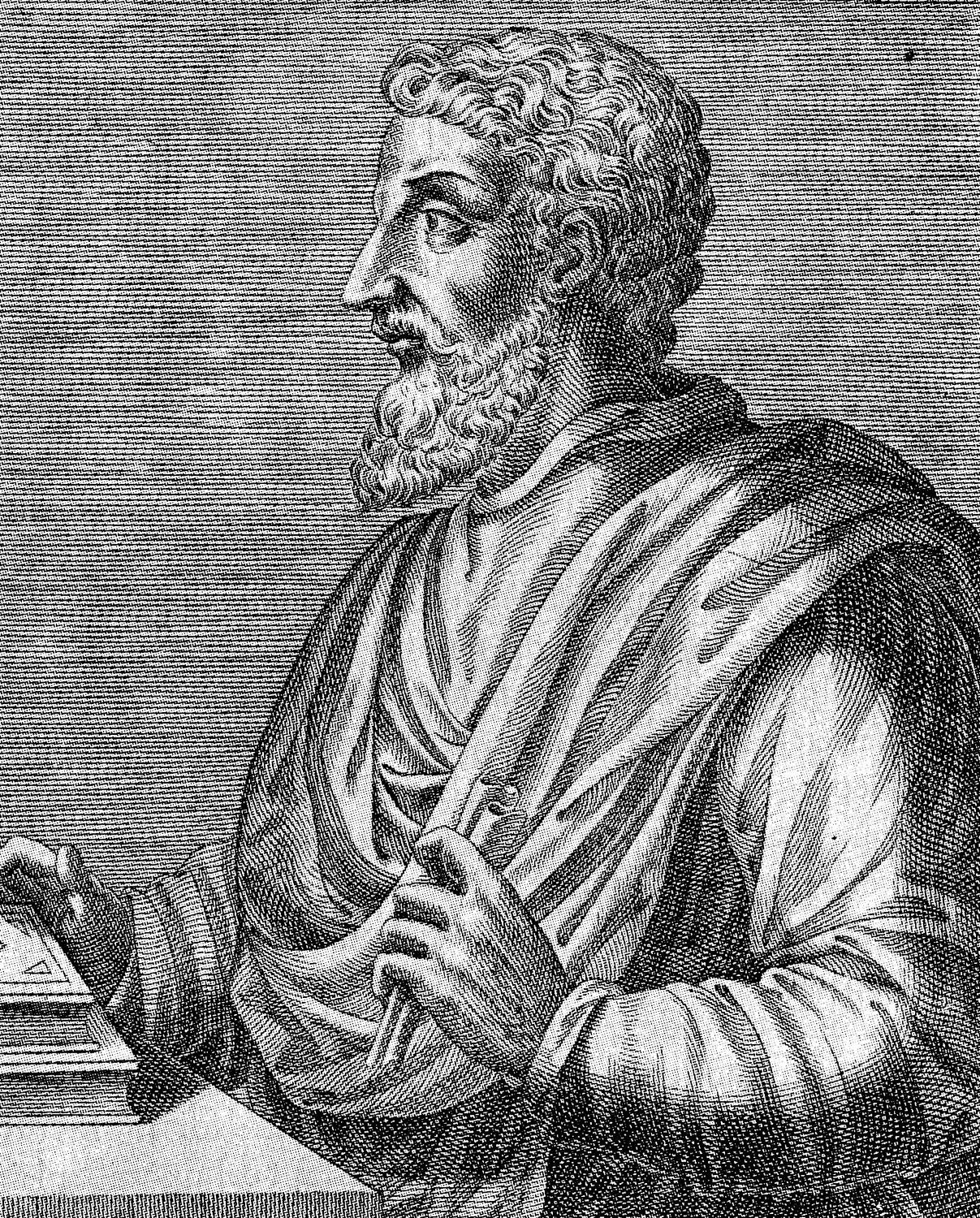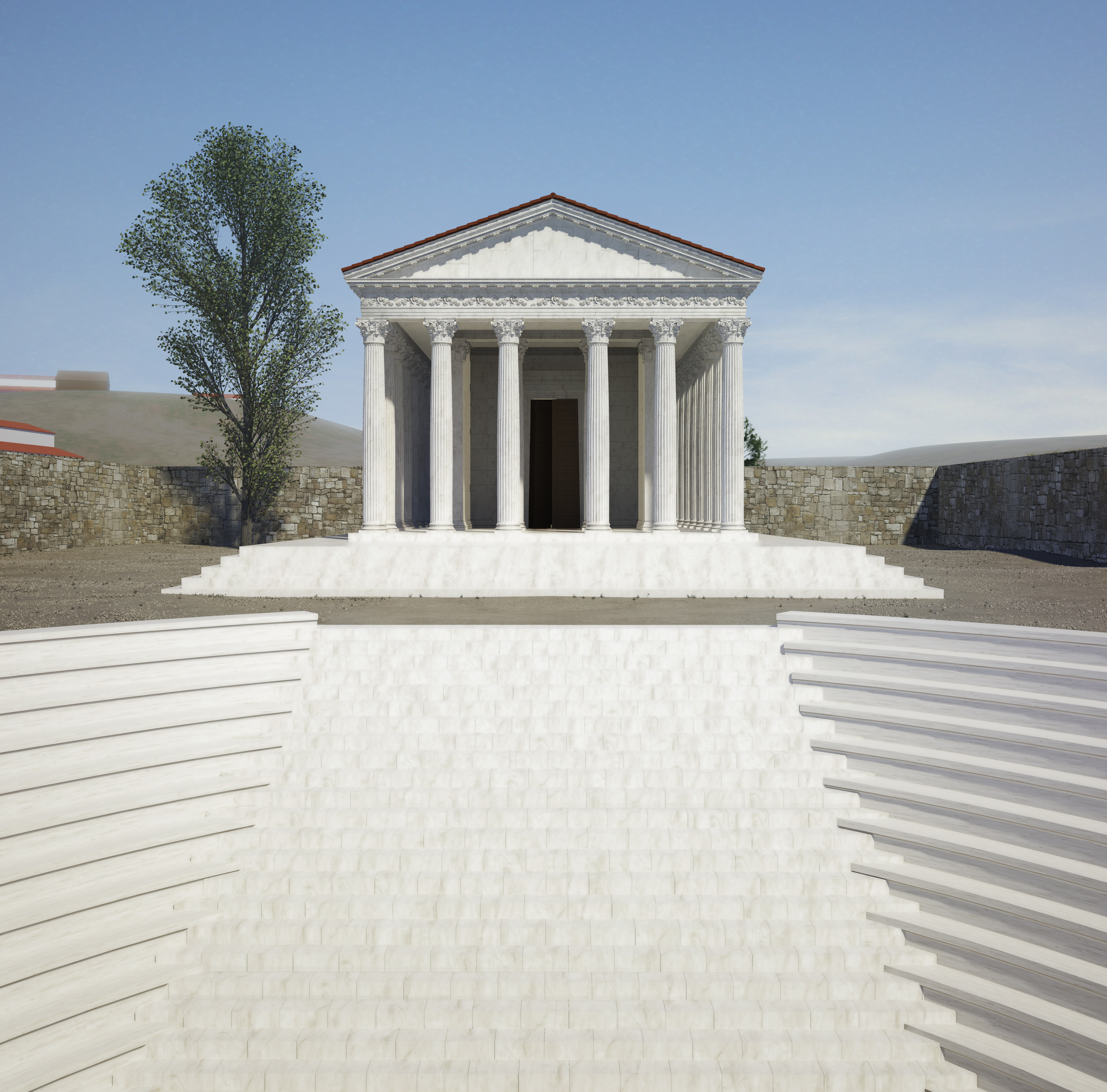|
Agathocles (writers)
Agathocles ( grc-gre, Ἀγαθοκλῆς; fl. 3rd century BC) was a Greek historian who wrote a history of Cyzicus () in the Ionic dialect. He is called by Athenaeus both a Babylonian and a Cyzican. He may originally have come from Babylon, and have settled at Cyzicus. The first and third books are referred to by Athenaeus. The time at which Agathocles lived is unknown, and his work is now lost; but it seems to have been extensively read in antiquity, as it is referred to by Cicero, Pliny, and other ancient writers. Agathocles also spoke of the origin of Rome. The scholiast on Apollonius cites Memoirs () by an Agathocles, who is usually supposed to be the same as the above-mentioned one. There are several other writers of the same name, whose works are lost to us but are mentioned by later writers: *Agathocles of Atrax, who wrote a work on fishing. *Agathocles of Chios, who wrote a work on agriculture. *Agathocles of Miletus, who wrote a work on rivers. *Agathocles of Samo ... [...More Info...] [...Related Items...] OR: [Wikipedia] [Google] [Baidu] |
Cyzicus
Cyzicus (; grc, Κύζικος ''Kúzikos''; ota, آیدینجق, ''Aydıncıḳ'') was an ancient Greek town in Mysia in Anatolia in the current Balıkesir Province of Turkey. It was located on the shoreward side of the present Kapıdağ Peninsula (the classical Arctonnesus), a tombolo which is said to have originally been an island in the Sea of Marmara only to be connected to the mainland in historic times either by artificial means or an earthquake. The site of Cyzicus, located on the Erdek and Bandırma roads, is protected by Turkey's Ministry of Culture. History Ancient The city was said to have been founded by Pelasgians from Thessaly, according to tradition at the coming of the Argonauts; later it received many colonies from Miletus, allegedly in 756 BC, but its importance began near the end of the Peloponnesian War when the conflict centered on the sea routes connecting Greece to the Black Sea. At this time, the cities of Athens and Miletus diminished in impo ... [...More Info...] [...Related Items...] OR: [Wikipedia] [Google] [Baidu] |
Varro
Marcus Terentius Varro (; 116–27 BC) was a Roman polymath and a prolific author. He is regarded as ancient Rome's greatest scholar, and was described by Petrarch as "the third great light of Rome" (after Vergil and Cicero). He is sometimes called Varro Reatinus to distinguish him from his younger contemporary Varro Atacinus. Biography Varro was born in or near Reate (now Rieti) to a family thought to be of equestrian rank, and always remained close to his roots in the area, owning a large farm in the Reatine plain, reported as near Lago di Ripasottile, until his old age. He supported Pompey, reaching the office of praetor, after having been tribune of the people, ''quaestor'' and ''curule aedile''. It is probable that Varro was discontented with the course on which Pompey entered when the First Triumvirate was formed, and he may thus have lost his chance of rising to the consulate. He actually ridiculed the coalition in a work entitled the ''Three-Headed Monster'' ( in ... [...More Info...] [...Related Items...] OR: [Wikipedia] [Google] [Baidu] |
Ancient Greek Writers Known Only From Secondary Sources
Ancient history is a time period from the beginning of writing and recorded human history to as far as late antiquity. The span of recorded history is roughly 5,000 years, beginning with the Sumerian cuneiform script. Ancient history covers all continents inhabited by humans in the period 3000 BCAD 500. The three-age system periodizes ancient history into the Stone Age, the Bronze Age, and the Iron Age, with recorded history generally considered to begin with the Bronze Age. The start and end of the three ages varies between world regions. In many regions the Bronze Age is generally considered to begin a few centuries prior to 3000 BC, while the end of the Iron Age varies from the early first millennium BC in some regions to the late first millennium AD in others. During the time period of ancient history, the world population was already exponentially increasing due to the Neolithic Revolution, which was in full progress. While in 10,000 BC, the world population stood ... [...More Info...] [...Related Items...] OR: [Wikipedia] [Google] [Baidu] |
Ancient Greek Historians Known Only From Secondary Sources
Ancient history is a time period from the beginning of writing and recorded human history to as far as late antiquity. The span of recorded history is roughly 5,000 years, beginning with the Sumerian cuneiform script. Ancient history covers all continents inhabited by humans in the period 3000 BCAD 500. The three-age system periodizes ancient history into the Stone Age, the Bronze Age, and the Iron Age, with recorded history generally considered to begin with the Bronze Age. The start and end of the three ages varies between world regions. In many regions the Bronze Age is generally considered to begin a few centuries prior to 3000 BC, while the end of the Iron Age varies from the early first millennium BC in some regions to the late first millennium AD in others. During the time period of ancient history, the world population was already exponentially increasing due to the Neolithic Revolution, which was in full progress. While in 10,000 BC, the world population stood ... [...More Info...] [...Related Items...] OR: [Wikipedia] [Google] [Baidu] |
Ancient Milesians
Ancient history is a time period from the beginning of writing and recorded human history to as far as late antiquity. The span of recorded history is roughly 5,000 years, beginning with the Sumerian cuneiform script. Ancient history covers all continents inhabited by humans in the period 3000 BCAD 500. The three-age system periodizes ancient history into the Stone Age, the Bronze Age, and the Iron Age, with recorded history generally considered to begin with the Bronze Age. The start and end of the three ages varies between world regions. In many regions the Bronze Age is generally considered to begin a few centuries prior to 3000 BC, while the end of the Iron Age varies from the early first millennium BC in some regions to the late first millennium AD in others. During the time period of ancient history, the world population was already exponentially increasing due to the Neolithic Revolution, which was in full progress. While in 10,000 BC, the world population stood ... [...More Info...] [...Related Items...] OR: [Wikipedia] [Google] [Baidu] |
Babylonian People
Babylonian may refer to: * Babylon, a Semitic Akkadian city/state of ancient Mesopotamia founded in 1894 BC * Babylonia, an ancient Akkadian-speaking Semitic nation-state and cultural region based in central-southern Mesopotamia (present-day Iraq) * Babylonian language, a dialect of the Akkadian language See also * Babylonia (other) * Babylonian astronomy * Babylonian calendar * Babylonian captivity or Babylonian exile, a period in Jewish history * Babylonian Jews, Jews of the area of modern-day Iraq and north Syria * Babylonian literature * Babylonian mathematics, also known as Assyro-Babylonian mathematics * Babylonian religion * First Babylonian dynasty, the first dynasty of Babylonia * Neo-Babylonian Empire The Neo-Babylonian Empire or Second Babylonian Empire, historically known as the Chaldean Empire, was the last polity ruled by monarchs native to Mesopotamia. Beginning with the coronation of Nabopolassar as the King of Babylon in 626 BC and bei ... (626–539 B ... [...More Info...] [...Related Items...] OR: [Wikipedia] [Google] [Baidu] |
People From Cyzicus
A person (plural, : people) is a being that has certain capacities or attributes such as reason, morality, consciousness or self-consciousness, and being a part of a culturally established form of social relations such as kinship, ownership of property, or legal obligation, legal responsibility. The defining features of personhood and, consequently, what makes a person count as a person, differ widely among cultures and contexts. In addition to the question of personhood, of what makes a being count as a person to begin with, there are further questions about personal identity and self: both about what makes any particular person that particular person instead of another, and about what makes a person at one time the same person as they were or will be at another time despite any intervening changes. The plural form "people" is often used to refer to an entire nation or ethnic group (as in "a people"), and this was the original meaning of the word; it subsequently acquired its us ... [...More Info...] [...Related Items...] OR: [Wikipedia] [Google] [Baidu] |
3rd-century BC Historians
The 3rd century was the period from 201 ( CCI) to 300 (CCC) Anno Domini (AD) or Common Era (CE) in the Julian calendar.. In this century, the Roman Empire saw a crisis, starting with the assassination of the Roman Emperor Severus Alexander in 235, plunging the empire into a period of economic troubles, barbarian incursions, political upheavals, civil wars, and the split of the Roman Empire through the Gallic Empire in the west and the Palmyrene Empire in the east, which all together threatened to destroy the Roman Empire in its entirety, but the reconquests of the seceded territories by Emperor Aurelian and the stabilization period under Emperor Diocletian due to the administrative strengthening of the empire caused an end to the crisis by 284. This crisis would also mark the beginning of Late Antiquity. In Persia, the Parthian Empire was succeeded by the Sassanid Empire in 224 after Ardashir I defeated and killed Artabanus V during the Battle of Hormozdgan. The Sassanids the ... [...More Info...] [...Related Items...] OR: [Wikipedia] [Google] [Baidu] |
3rd-century BC Greek People
The 3rd century was the period from 201 ( CCI) to 300 ( CCC) Anno Domini (AD) or Common Era (CE) in the Julian calendar.. In this century, the Roman Empire saw a crisis, starting with the assassination of the Roman Emperor Severus Alexander in 235, plunging the empire into a period of economic troubles, barbarian incursions, political upheavals, civil wars, and the split of the Roman Empire through the Gallic Empire in the west and the Palmyrene Empire in the east, which all together threatened to destroy the Roman Empire in its entirety, but the reconquests of the seceded territories by Emperor Aurelian and the stabilization period under Emperor Diocletian due to the administrative strengthening of the empire caused an end to the crisis by 284. This crisis would also mark the beginning of Late Antiquity. In Persia, the Parthian Empire was succeeded by the Sassanid Empire in 224 after Ardashir I defeated and killed Artabanus V during the Battle of Hormozdgan. The Sassanids ... [...More Info...] [...Related Items...] OR: [Wikipedia] [Google] [Baidu] |
Ancient Greek Writers
Ancient history is a time period from the beginning of writing and recorded human history to as far as late antiquity. The span of recorded history is roughly 5,000 years, beginning with the Sumerian cuneiform script. Ancient history covers all continents inhabited by humans in the period 3000 BCAD 500. The three-age system periodizes ancient history into the Stone Age, the Bronze Age, and the Iron Age, with recorded history generally considered to begin with the Bronze Age. The start and end of the three ages varies between world regions. In many regions the Bronze Age is generally considered to begin a few centuries prior to 3000 BC, while the end of the Iron Age varies from the early first millennium BC in some regions to the late first millennium AD in others. During the time period of ancient history, the world population was already exponentially increasing due to the Neolithic Revolution, which was in full progress. While in 10,000 BC, the world population stood ... [...More Info...] [...Related Items...] OR: [Wikipedia] [Google] [Baidu] |
Pessinus
Pessinus ( el, Πεσσινούς or Πισσινούς) was an Ancient city and archbishopric in Asia Minor, a geographical area roughly covering modern Anatolia (Asian Turkey). The site of the city is now the modern Turkish village of Ballıhisar, in a tributary valley of the Sangarios, Sakarya River on the high Anatolian plateau at 950 m above sea level, 13 km from the small town of Sivrihisar. Pessinus remains a Catholic (formerly double) titular see. Description The temple area As yet, the temple area, which was excavated between 1967 and 1972, is the only well-studied area of Pessinus. It was studied thoroughly by M. Waelkens (current director of Sagalassos excavations) in the 1980s and between 2006 and 2012 by Verlinde (Ghent University), who built on the findings of the former to analyze and reconstruct the architecture of the Corinthian peripteral temple, of which only the massive foundations remain. Investigations led to several observations, such as the ... [...More Info...] [...Related Items...] OR: [Wikipedia] [Google] [Baidu] |





_1938.jpg)



